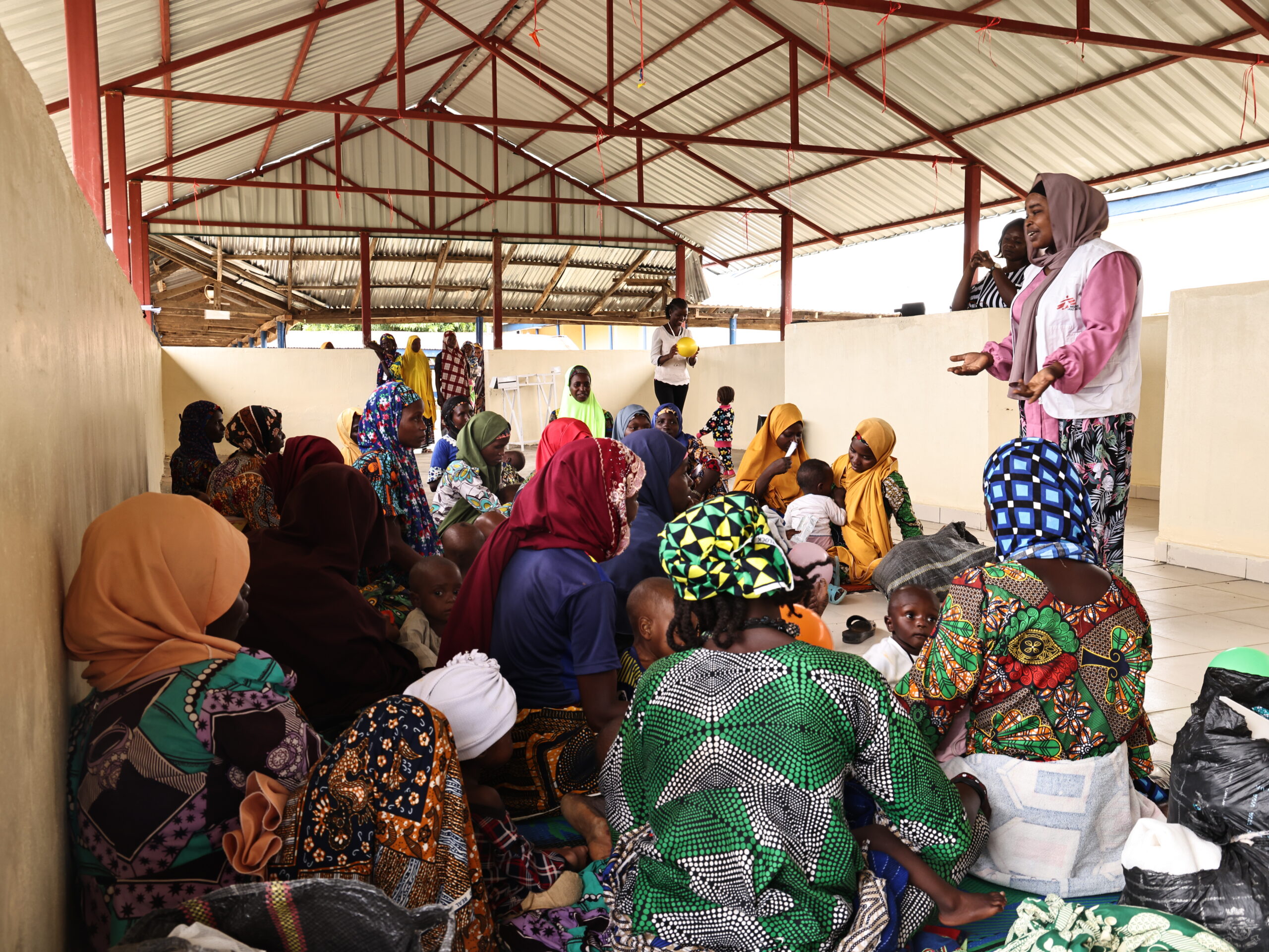The Scientific Quest for Healthier Skin
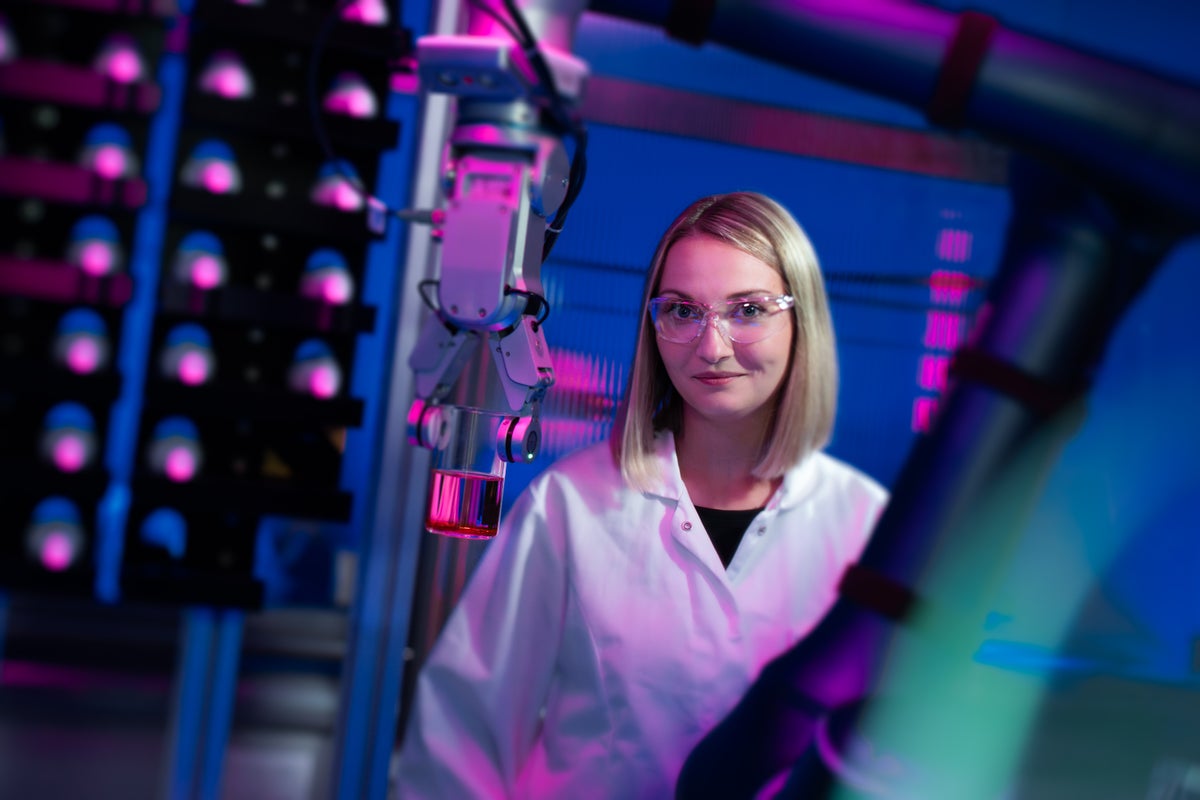
Beauty may only be skin-deep, but beautiful skin reveals a whole lot more, new research shows. It shows vitality and good health—and it could even extend your healthy years.
“Skin is one of the largest organs, and it has a key role in protecting our body,” says Anne Colonna, who is the global head of advanced research at L’Oréal Groupe. “Because skin has a key role in health, it’s really important to maintain healthy, youthful-looking skin as we age.”
Skin is much more than just an outer layer. It’s a barrier that keeps out pathogens and pollutants, protects against ultraviolet (UV) radiation and can even signal when something is wrong elsewhere in the body; skin disorders are linked to Parkinson’s disease, for instance.
Like many of us, Colonna wasn’t always so aware of skin’s importance. “I didn’t protect my skin enough when I was a teenager or in my 20s.” But the data she and others are collecting suggests that some of the damage caused in early life is reversible and that skin can be made to appear younger.
Colonna studies skin to discover biological markers that serve as signs of its overall health. After discovering hundreds of such biomarkers, her team began using artificial intelligence to analyze how skin ages biologically, formalizing a framework called the Wheel of Longevity for Beauty that focuses on the root causes of aging in skin tissue: structural alterations, signaling disorders and metabolic dysfunction. The goal is “to help guide targeted interventions across key biological hallmarks of skin aging,” Colonna says.
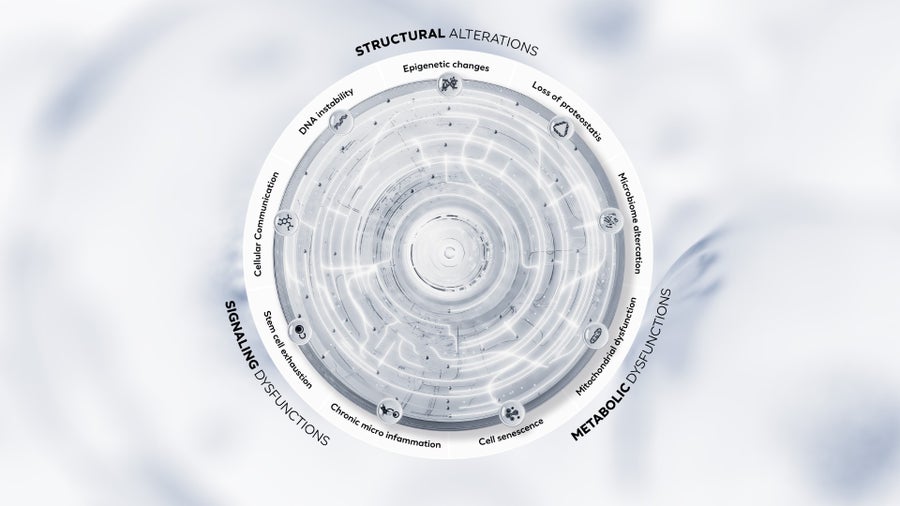
L’Oréal researchers have identified more than 260 biomarkers, sorted them into nine biological hallmarks of skin aging, and created a model that they call the “Wheel of Longevity for Beauty.”
Healthy skin, longer life
Why do some people look younger than their years? Answering that question has required biologists to search below the surface. Most of the cells in skin’s surface layer—the epidermis—are keratinocytes, which help form a strong barrier. Deeper in the epidermis, melanocytes produce melanin, the pigment that makes skin darker and helps block UV light, while Langerhans cells activate the immune system if an invader does manage to squeeze through.
Below the epidermis, the thicker dermis is home to hair follicles, sweat glands and blood vessels. This layer also contains collagen and elastin, which makes skin firm and elastic. As it ages, collagen and elastin fibers get thinner and break apart, so skin becomes less elastic and accumulates wrinkles while also losing part of its protective function.
People with youthful, healthier skin have skin cells with fewer biomarkers of aging, including deterioration of age-sensitive molecules like collagen in connective tissues and DNA sequences called telomeres that protect the ends of the genetic material, says Andrea Maier, a clinical scientist and director of the Academy for Healthy Longevity at the National University of Singapore. They are less likely to have age-related diseases such as diabetes or hypertension, which can reduce lifespan by raising the risk of metabolic and cardiovascular disease, she adds. “From the age of about 30 or 40 on if others perceive you as younger, you live longer.”
Skin health can also be used to track the effectiveness of health interventions: for example, past studies have found that changes to diet or dietary supplements can delay skin aging. In fact, we can use skin as an indicator of how healthy we are, Maier says. “Skin needs to be taken seriously and not just seen from an aesthetic perspective.”
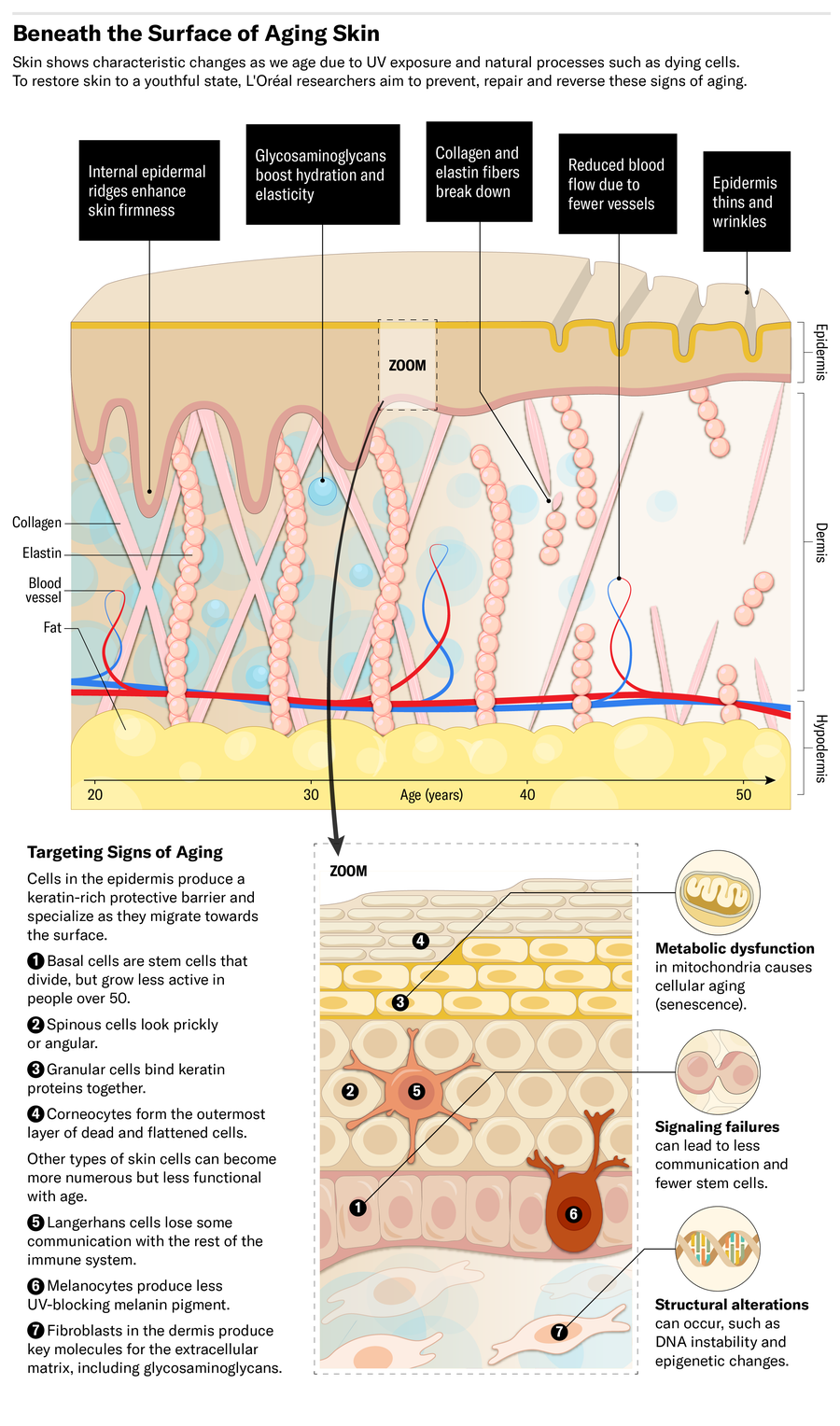
Reducing exposure
While genetics is responsible for about 60 percent of skin aging in adults, the remaining 40 percent is caused by lifestyle factors such as diet, sleep or smoking, plus environmental influences like UV or pollution.
Protecting skin from these environmental exposures—the exposome—is challenging given the organ’s exposure. Skin’s surface area was once thought to be about two square meters, but that estimate assumed a flat surface and ignored the microscopic folds and pits that house structures such as hair follicles. When these are included in the calculation, the total surface area of skin is at least 30 square meters.
While it’s well known that UV can trigger skin cancer, not everyone knows that it can also accelerate skin aging. There are lifestyle interventions that help prevent skin disease, such as wearing sunscreen and avoiding stress, illicit drugs and alcohol. But the science now suggests it’s possible to go even further in saving our skin—by putting the brakes on aging itself.
Like almost all cells in the body, skin cells gradually age through a process known as senescence. Senescent cells no longer actively divide to create new copies. “If we can develop a strategy to slow down cellular aging, we can maintain healthy skin longer,” Colonna says. “To do that, we need to understand the root causes of biological aging.”
Working with biology
To understand what drives skin aging, over several years L’Oréal researchers collected millions of data points on changes to proteins and DNA in skin and hair, using it to build the Longevity AI Cloud, a proprietary platform that has revealed more than 260 skin longevity biomarkers, increasing L’Oréal’s scientists’ understanding of why and how skin ages. This platform is designed to identify previously unidentified signs of aging and predict how active ingredients, alone or in combination, affect key hallmarks of skin aging. “It brings together all the information we have on how skin cells interact with each other,” Colonna says.
This research is already being turned into applications. For a person to slow down the aging process, for instance, they may need to know what’s causing their skin to look less youthful. Together with Korean biotech company NanoEntek, L’Oréal developed a lab-on-a-chip diagnostic device called Cell BioPrint. The device analyzes a person’s skin proteins to determine their skin’s biological age and predict its aging trajectory.
L’Oreal is also collaborating with Timeline, a Swiss biotech startup, to address a major hallmark of aging: dysfunctional mitochondria. These tiny power stations inside our cells produce less energy over time, and Timeline is aiming to rejuvenate mitochondria using urolithin A, a natural compound produced during digestion of pomegranates and other berries.
In addition, L’Oréal is developing specific technologies and formulas to address skin longevity. For example, a skin cream co-developed with a French biotech startup called Oxiproteomics contains polydeoxyribonucleotide (PDRN), a derivative of DNA that was originally developed for wound healing, as an active ingredient. “The goal is to boost cellular energy production from mitochondria, so skin behaves in a younger way,” says Vania Lacascade, L’Oréal Groupe’s global chief innovation officer.
“With these partnerships, we can provide a very integrative, science-backed approach to longevity that reflects our commitment to lifelong beauty,” Lacascade says.
Learn more about L’Oréal Groupe’s science-based innovation at this dedicated resource.
link


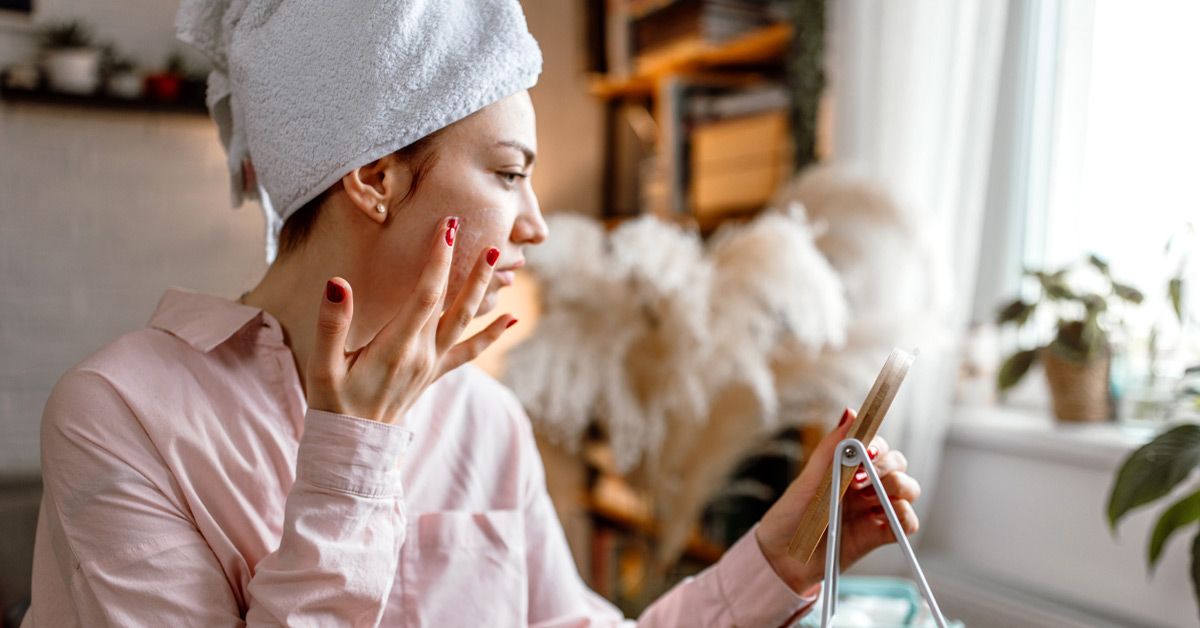



:max_bytes(150000):strip_icc()/7-Day-Healthy-Aging-Meal-Plan-for-Diabetes-Created-by-a-Dietitian-b1bfceb3b9bb4ac387159b3a6ae3d8c2.jpg)
